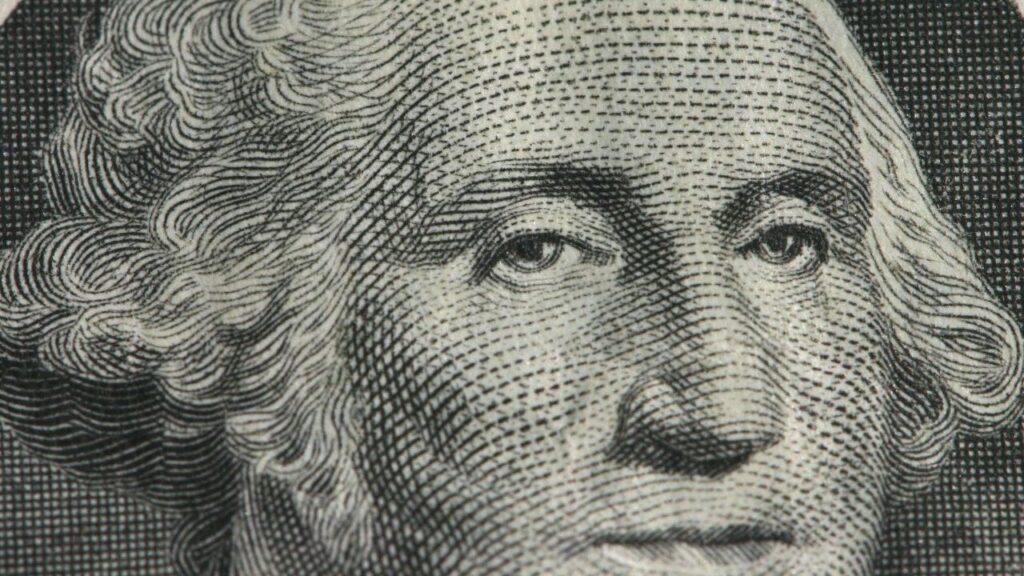The US Dollar Index – abbreviated USDX – is the value of the US dollar measured against a group of six foreign currencies. Just as a stock index measures the value of a basket of securities, the US Dollar Index expresses the value of the dollar in relation to a basket of currencies. As the dollar strengthens, the index rises and vice versa.
The US Dollar Index is owned by Intercontinental Exchange (ICE). ICE is a global exchange that processes clearing and financial data and operates multiple markets across nine different asset classes. It also owns the trademarks for Dollar Index and USDX.
The strength of the dollar can be considered a temperature gauge of US economic performance, especially in exports. The greater the level of exports, the greater the demand for US dollars to purchase US goods.
How the dollar index works and what currencies it contains
The US Dollar Index is a weighted geometric average of six foreign currencies, and this index is maintained by ICE. Because the economies of each country (or group of countries) are of different sizes, each weighting is different. The countries included and their weight are as follows:
- Euro (EUR): 57.6 percent
- Japanese Yen (JPY): 13.6 percent
- British pound (GBP): 11.9 percent
- Canadian dollar (CAD): 9.1 percent
- Swedish crown (SEK): 4.2 percent
- Swiss Franc (CHF): 3.6 percent
The index is calculated using the following formula:
USDX = 50.14348112 × EURUSD^-0.576 × USDJPY^0.136 × GBPUSD^-0.119 × USDCAD^0.091 × USDSEK^0.042 × USDCHF^0.036
In the example above, when the US dollar is used as the base currency, the value of the exponent is positive, as with the Japanese yen, Canadian dollar, Swedish krona, and Swiss France. When the US dollar is the quoted currency, the value of the exponent will be negative, as with the euro and the British pound. The result gives you the value of the USDX index.
Many factors will influence the way the USDX moves. Inflation or deflation of any currency, monetary policy, geopolitical conflicts and export/import ratios, to name a few. The US dollar is the world’s reserve currency and as such typically generates high demand.
History of the US Dollar Index
Before the US Dollar Index was created by the Federal Reserve in 1973, the US dollar was pegged to the price of physical gold, and the world’s currencies were pegged to the dollar accordingly. This system was made possible by the 1944 Bretton Woods Agreement, in which major world leaders agreed to physical gold as the basis for U.S. dollars, then weighed in on the world’s other currencies.
Then-US President Richard Nixon effectively ended this agreement in the early 1970s when he announced that the value of the dollar would no longer be based on gold. From there, countries were free to let their currencies ‘float’ and let the markets determine its value.
To track the value of the dollar in this new world, the Federal Reserve created the US Dollar Index.
How to Invest in the US Dollar Index
Investors can trade the US Dollar Index in several ways.
One way is to trade the USDX through ETFs or mutual funds. Rather than buying or selling multiple US dollar ‘pairs’ at the same time, you would trade the index, which would rise and fall in line with general sentiment towards the US dollar. Two ETFs here are the WisdomTree Bloomberg US Dollar Bullish ETF (USDU) and the Invesco DB US Dollar Index Bullish Fund (UUP).
Investors can also trade USDX futures. Futures allow traders to hedge their accounts against currency risk and fluctuations in the US dollar, or simply bet that the index will move in one direction or another. USDX futures trade 21 hours a day via ICE. Index futures can respond to both domestic and international economic data, as well as other reports relating to the strength of the dollar or other currencies.
Investors can also buy and sell options on ETFs that track the index, giving them leverage to profit from price changes in the ETF.
Editorial Disclaimer: All investors are advised to conduct their own independent research into investment strategies before making any investment decision. In addition, investors are advised that the past performance of investment products does not guarantee future price increases.


